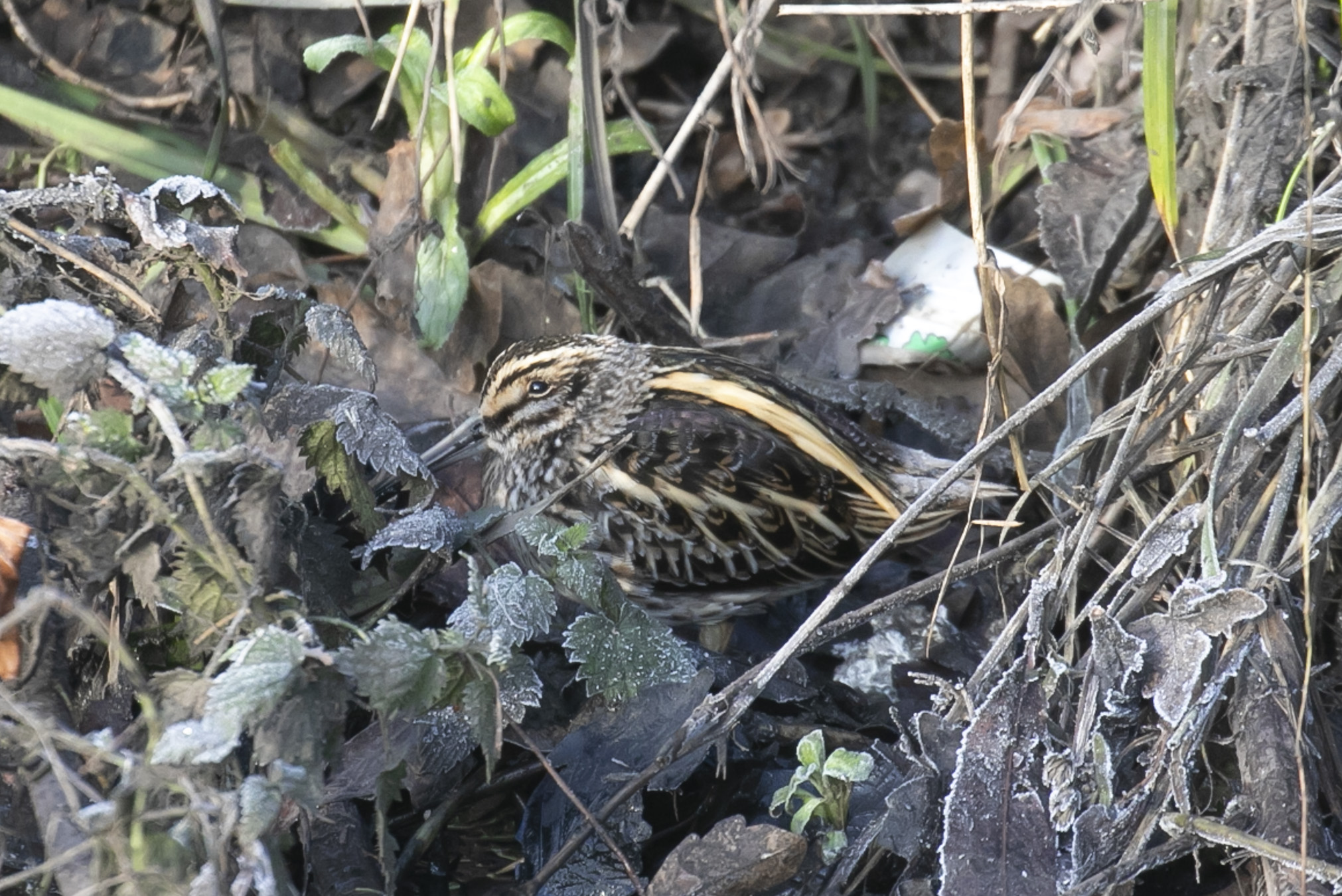As is so often the way in the modern world, it began with a phone message. The current spell of freezing weather has been tough for birds, with some species fleeing the worst of the snow in southeast England by moving west. All standing water has now been frozen for over a week, forcing wading birds to seek out flowing water to find unfrozen mud. Such conditions can force some birds into the city waterways too. I was out early on Saturday and Sunday mornings and by Monday morning had added the third Mute Swan and the first Golden Plovers for the Lye Valley area, as they flew overhead:

I was at work on Tuesday, when Tony Gillie messaged me, with some staggering news:

It was not just that this would be a remarkable species to see within Oxford city, but also that the photo was taken on a phone. The bird must have been standing next to the observer! I contacted Isaac West and we agreed to go and see if we could find the Jack Snipe at first light the following morning, Wednesday. Suddenly Sunday felt a very long time ago.
We arrived at the top pond at the head of the valley, in bitterly cold temperatures. Immediately we could see a number of Common Snipe rising from the small pools at the top of the valley, circling around and descending again. With these birds being so mobile, it was hard to put a number on them. A conservative count was four, but there could easily have been twice this number present. For context, there is only one other Lye Valley record of Common Snipe, a single bird from January of this year.



We took a few steps closer, another snipe rose, I raised my binoculars, saw the short bill and the long dark crescent under the eye and I called “that’s it!” as the bird landed a short way down the valley. As we got onto the boardwalk some snipe flew back towards the ponds, so we returned to the top pond. We scanned the pond edges and Isaac called “I think I’ve got it!” There, amongst the frozen vegetation was a tiny, but magnificent, Jack Snipe:

The upperparts were very dark brown, making the long strong scapular stripes glow golden-yellow in the pre-dawn light. A passing Wren gives some impression of how small these birds are:

As the rising sun began to touch the top of the bird’s head, we noticed that there was frost on the wingtips and tail of this bird, literal Jack frost:

I put the news out to the local group and we were joined by a few other people, including Pete Roby:

Jason turned up, was greeted by sunshine and managed to get some superb video, as the Jack Snipe de-frosted and began to feed:
Even better, this Jack Snipe was the 100th species that I have recorded in the Lye Valley area and I could not have hoped for a better species for this landmark. It also takes the site list to 103 species, the illustrated checklist of all these species can be seen here. The Lye Valley bird list now contains seven species of wader, remarkable for an area with no significant open water. The cold spell is forecast to end today, Saturday, and a visit this morning produced more waders. Not one, but two Woodcocks:

This two-week period of freezing weather may have been tough for the birds, but has produced some incredible local patch birding.

Oh, I am so delighted to encounter this blog, and to read about the Jack Snipe! I’ve been (gently and not terribly competently) watching and listening to birds in Lye Valley for years, and have never seen this beautiful creature. The video is exquisite. I look forward to learning more about my local patch species from your blog.